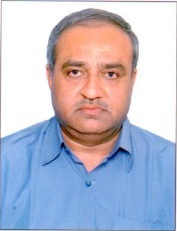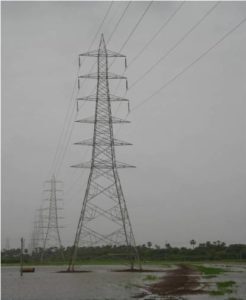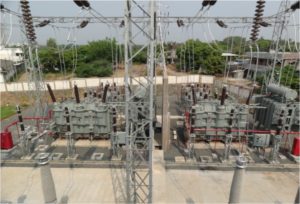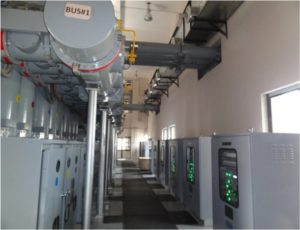
Gujarat Energy Transmission Corporation Ltd, popularly known as GETCO, represents the power transmission-related function of the erstwhile Gujarat Electricity Board. B. B. Chauhan, in this exclusive interaction with T&D India, discusses how GETCO’s power transmission network has grown over the recent years, and how the state transmission utility is gearing up to meet the challenges posed by induction of renewable energy into the grid. Chauhan also speaks about the roadmap drawn for making the state grid techno-commercially efficient. An interview by Venugopal Pillai.
Tell us about the current size of GETCO’s power transmission network, in terms of transmission lines, substations and transformation capacity. How has this growth been over the past, say, 3-4 years?
GETCO being state transmission utility, has a vast network of 1,770 substations, more than 58,000 ckm of transmission line and 1,00,000 MVA transformation capacity, ranging from 66kV to 400 kV, covering every nook and corner of the state of Gujarat.
Capacity addition in the transmission network is planned through a system study carried out by System Cell (STU) under GETCO considering various parameters like load growth, upcoming generation, reactive power management, voltage profile, discom requirement, seamless integration of renewable energy generation etc. In last five years, GETCO has constructed 500 substations and 13,500 ckm of transmission line ranging from 66kV to 400kV voltage class averaging approximately 100 substations and more than 2,500 ckm of transmission lines every year. As of today, we are having 100 per cent redundancy and also dual supply to all the substations maintaining a ring main system at every voltage class level.
Gujarat has seen a rapid expansion in renewable energy capacity, particularly, solar. Tell us about the challenges facing by the transmission network whilst inducting intermittent energy. How is GETCO overcoming the challenges?
Gujarat, being blessed with high potential of renewable energy sources especially wind and solar energy, is on a right path to build capacities and utilize these renewable energy sources. Today, renewable energy generation in Gujarat has gone up from 270 mw in 2005-06 to 6,717 mw, which is today 32.8 per cent of total power installed capacity of the state. Installed capacity of wind generation alone has gone up 20 folds from 270 mw in year 2005-06 to 5,405 mw as on March 2017. Similarly, 1,262 mw of solar capacity has been added till date.
To integrate such a huge capacity of renewable energy having the peculiarities of uncertainty, intermittency and variability throws a great challenge to us.
Major challenges that are being faced by us in expanding the network for the renewable energy projects are:
- Gestation period for the wind and solar plant is not very high, whereas transmission line projects take substantial time with challenges of right-of-way and local constraints. It is therefore essential that wind developer’s plan is known to us in order to plan the transmission network in advance.
- Renewable energy projects are remotely located and laying a transmission line exclusively for renewable energy evacuation is sub-optimally utilized and invites the explanation for cost benefit analysis.
- There are grid operation challenges due to uncertain nature of renewable energy generation specially wind energy.
To overcome the techno-commercial issues arising out of integration of the growing share of renewable energy to the state grid, we have first of all focused on system study to know anticipated constraints in a timeframe of 2020, when conventional generation will also be as high as 25,000 mw in Gujarat along with renewable RE of about 7500 mw to 8000 mw. The outcome of this study has suggested grid stabilization solutions including forecasting model.
Further, preliminary system study has also been done to identify necessary and essential transmission elements to integrate RE along with conventional generation in the grid. These identified elements are approved under green energy corridor funding.
Apart from this, GETCO has also initiated renewable energy control station under State Load Dispatch Centre to capture 100 per cent data on real time operation and forecasting of the wind and solar generation.

What is your view on setting up of HVDC lines in GETCO’s intrastate transmission network?
HVDC lines are economical and recommended for the long distance and bulk power transmission which will be more beneficial for interstate power transmission. Presently our 400kV network is quite adequate to handle the generation capacity as well as renewable capacity and therefore, HVDC is not our priority today.
Tell us about the gradual reduction in transmission losses (technical) over the years, in GETCO’snetwork.
The transmission loss during the past four years has been in the decreasing trend limiting below 4 per cent with figures of 3.94 per cent, 3.76 per cent, 3.68 per cent and 3.76 per cent.
We cannot fix firm targets for the reduction of transmission losses, given the fact that power flow in the transmission network is quite a dynamic phenomenon in real time operation, because of several uncontrollable factors like sudden loss and outage of generation, renewable energy generation, peak and off-peak timings, seasonal variations, load diversity etc.
Nevertheless, technical measures could be anticipated well in advance and put in place to overcome such uncontrollable factors to some extent like reactive power compensation, bifurcation of long feeder, construct link lines, and replace aged conductors.

We observe that Gujarat has so far not actively pursued the public private partnership model for building new transmission lines. Please discuss.
We have not gone so far for private sector participation in developing transmission network, as we have well established regulatory mechanism and also streamlined project management activities for the timely completion of the projects within stipulated budget without compromising on the quality. Moreover, process of PPP model is quite lengthy and therefore, we are planning to cover those lines in this model which would be required in long terms.
What has been the response to Gujarat’s long-term open access policy?
The response towards the Gujarat’s long-term open access is fairly good. It is very encouraging as the tenure is 12 to 25 years. The transmission charges are redistributed on merchant power generators compared to the burden on our sole licensee and also the merchant generators can recover their fixed cost.
Given that GETCO’s transmission network is growing rapidly, tell us above new technologies that GETCO is deploying both for construction of new infrastructure and O&M of the operational transmission network.
Among the various technologies available under start-of-art technologies, GETCO wants to focus objectively on those, which shall provide system efficiency, network reliability, long term sustainability and cost effectiveness.

We have drawn a roadmap and are pursuing it first through pilot project to gain full knowledge, so that we can implement state-of-art technology in full scale later. Some of such projects are as follows:
- Communication network by laying optical fiber ground wire (OPGW) in our transmission towers.
- Digital substation to control substation through human machine interface (HMI).
- To support system operator in load dispatch centers with decision making tools. This will be achieved through data analysis and analytics designed from PMUs and WAMS.
- Geographical Information System (GIS) for asset identification and asset management.
- Compact switchgear technology to build sub-station in minimum land.
- Grid support and stabilization solutions to integrate Renewable Energies and improve power transfer capabilities of transmission lines.
- Integrated Asset Management System
- Power transformer with ester oil at 66/11kV class voltage – high flash point to safeguard transformer from catching fire.
- Adoption of high temperature low sag (HTLS) conductor in existing lines to increase power transfer capacity and save on laying new lines and right of way cost.
- Conversion of conventional protection system into substation automation system (SAS)
- Line monitoring unit to assess the maximum line capacity
- SF6 switchgear with SCADA at 11kV to optimize the manpower for operation.
- STATCOM at transmission & distribution level for dynamic reactive power
What has been the role of international suppliers in GETCO’s procurement? Are there some products that need to be imported due to absence of local production?
GETCO is making a global presence not because of the absence of local production but to have a competitive pricing. Today, in our projects, many international suppliers are not only participating but also getting the contract because of their competitive prices.
Our local production market has to come up with a solution to be a price leader. Although, under the Government of India Initiative of Make in India, we are also encouraging the local production by our tender clause stating that the new international bidders have to procure at least 30 per cent of the contract supply from their Indian manufacturing facility.


